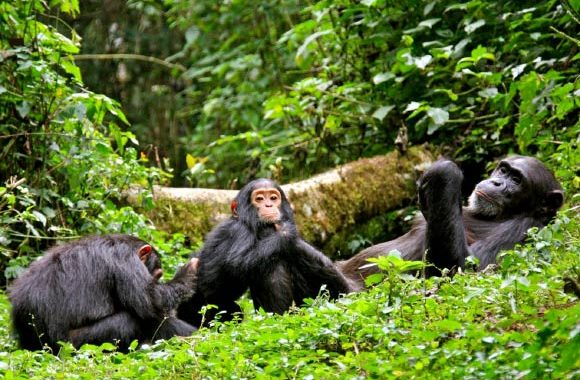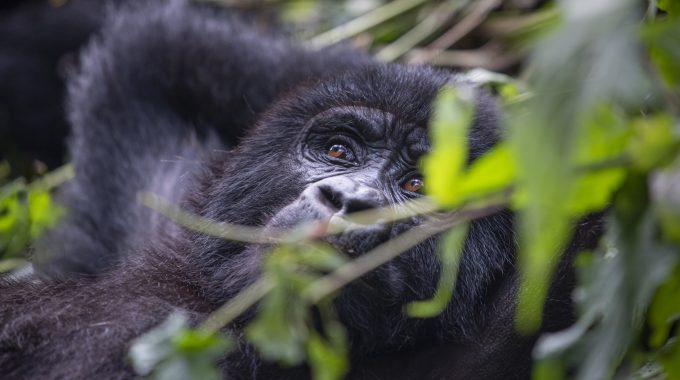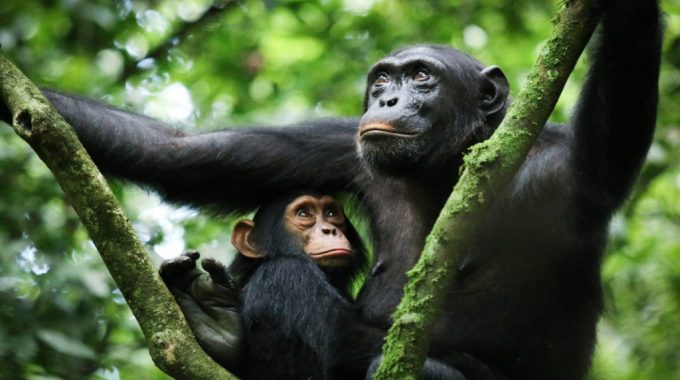Which African country has the most chimpanzees? The African country with the most chimpanzees is…
What plants are in Kibale National Park?
What plants are in Kibale National Park? Kibale National Park is a rich, biodiverse tropical rainforest in southwestern Uganda, home to a variety of plant species that contribute to the park’s ecosystem. The flora within Kibale National Park supports its dense population of primates, including chimpanzees, as well as many other animals, birds, and insects. The park’s plant life includes trees, shrubs, herbs, ferns, epiphytes, and vines, with different species adapted to the varying elevations and microhabitats found throughout the park.

What plants are in Kibale National Park? Below is a detailed look at the key plant types found in Kibale National Park:
-
Dominant Tree Species
The park’s landscape is characterized by a mixture of tropical rainforest and woodland savanna, with tree species that dominate the canopy. Some of the most notable trees include:
- Mahogany (Khaya anthotheca): This tree is highly valued for its strong, durable wood, and it is one of the most significant species in Kibale’s forest. Mahogany trees can grow very tall and are often found in the mid to upper canopy of the forest.
- Ironwood (Olea capensis): Ironwood trees are notable for their dense, strong wood, and they are often found in the deeper parts of the forest. The wood is sometimes used for local construction.
- Canarium (Canarium schweinfurthii): This species of tree produces edible fruits that are important for local wildlife, including primates like chimpanzees. It has a distinctive bark and is part of the park’s upper canopy.
- Ugandan Olive (Olea africana): A large tree species often found in the park’s higher-altitude areas, it is an important part of the ecosystem and can live for centuries.
- Ficus (Ficus spp.): Members of the fig family are common in Kibale, often growing as large trees or epiphytes. Ficus trees provide fruits that are eaten by various primates and birds. The strangler fig is one of the more notable species, which grows by encircling other trees before eventually overtaking them.
- Piptadenia (Piptadenia africana): A hardwood tree commonly found in Kibale, it plays an essential role in the forest’s structure and provides shelter for many animals.
- Celtis (Celtis durandii): This tree produces edible fruits that are favored by some of the park’s primate species.
-
Ferns and Palms
Guide to plant species in Kibale Forest: What plants are in Kibale National Park?
Kibale has a variety of smaller plants growing in its lower layers, especially in areas with high humidity and dense canopies.
- Raphia Palm (Raphia farinifera): Known for its tall trunks and large fronds, this palm tree thrives in moist, swampy areas of the forest. Its fibers are used locally for crafts and construction.
- Sago Palm (Metroxylon sagu): Found in some areas of the park, it is cultivated for its edible starch-rich trunk.
- Ferns (e.g., Cyathea spp.) and mosses: The moist understory of Kibale National Park supports a variety of fern species. Cyathea species (tree ferns) and mosses are particularly abundant in shaded, damp environments, often growing on tree trunks and rocks.
-
Epiphytes
Epiphytes are plants that grow on other plants (especially trees), taking nutrients from the air, moisture, and light rather than from the soil. Some notable epiphytic species in Kibale include:
- Orchids: Kibale has a wide variety of orchid species that grow as epiphytes. These orchids add significant biodiversity to the forest and attract pollinators.
- Lichens: These symbiotic organisms (combinations of fungi and algae) grow on trees and rocks in the humid environment of the park.
- Mosses: Mosses cover trees and the forest floor, helping to maintain the moist microhabitats within the forest.
-
Bamboo
At the higher altitudes of Kibale, particularly in areas near the park’s boundary with the Rwenzori Mountains, bamboo forests are prevalent. Bamboo provides an important habitat for animals like the mountain gorilla (which sometimes crosses into Kibale) and other primates. Some species of bamboo found in the park include:
- Giant Bamboo (Bambusa vulgaris): This species is common at higher altitudes and can form dense thickets that provide shelter and food for wildlife.
- Hagenia bamboo (Hagenia abyssinica): This species is also native to higher altitudes and is known for its use in local traditional practices, especially its medicinal properties.
- Shrubs and Ground Layer Vegetation
The understory of Kibale National Park contains various shrubs and herbaceous plants, many of which play essential roles in the local food web, providing nourishment for insects, primates, and other animals. Some notable species include:
- Stool plants and climbers: These species of shrubs are found in the park’s dense understory, contributing to the overall complexity of the habitat.
- Herbaceous plants: These short plants, many of which are medicinal or edible, are scattered throughout the park. Some of these plants include species of Commelina, which are small, herbaceous plants with striking blue flowers.
- Creepers and vines: Vines, such as species of Passiflora (passionflower), snake vines, and others, cover the ground and climb up trees, helping to maintain the complexity of the forest structure.
-
Wildflowers
While Kibale’s environment is primarily characterized by its tree canopy and lush understory, there are also wildflowers that add to the park’s botanical diversity. These wildflowers often grow along forest trails and near streams.
- Zingiberaceae (Ginger family): Various species of wild ginger and related plants thrive in Kibale, particularly in shaded, moist environments. Their brightly colored flowers can be seen in the park during the rainy seasons.
-
Medicinal Plants
Kibale’s flora is rich in plant species used for traditional medicine. Many of these plants are used by local communities for healing purposes, including:
- African Ginger (Siphonochilus aethiopicus): This plant is used to treat a variety of ailments, including respiratory conditions.
- African Willow (Salix capensis): Used in traditional medicine to treat ailments like fever and stomach problems.
- Aloe Vera: Known for its healing properties, this plant is also found in parts of Kibale.
Summary of Kibale’s Plant Diversity:
- Tree species: Includes Mahogany, Ironwood, Canarium, and Ficus.
- Palms and ferns: Such as Raphia and various ferns like Cyathea.
- Epiphytes: Orchids, mosses, and lichens.
- Bamboo: Includes Giant Bamboo and Hagenia bamboo in the highland areas.
- Shrubs and ground plants: A variety of climbers, herbs, and medicinal plants.
Kibale National Park’s diverse vegetation is critical to maintaining its high biodiversity, providing food, shelter, and breeding grounds for many species, including its renowned primate populations



